This post was sponsored by The Michigan Office of Highway Safety Planning as part of an Influencer Activation for Influence Central and all opinions expressed in my post are my own.
As parents, we are always doing our absolute best to makes sure that our children stay happy, healthy and safe. One of the main concerns for most parents is car safety, especially when it comes to car seats and boosters. Unfortunately, there is often a lot of confusion and incorrect information when it comes to what guidelines to follow, especially for older children. Motor vehicle accidents is one of the leading causes of death for children, so being educated and informed on best practices is a must for keeping your children safe.
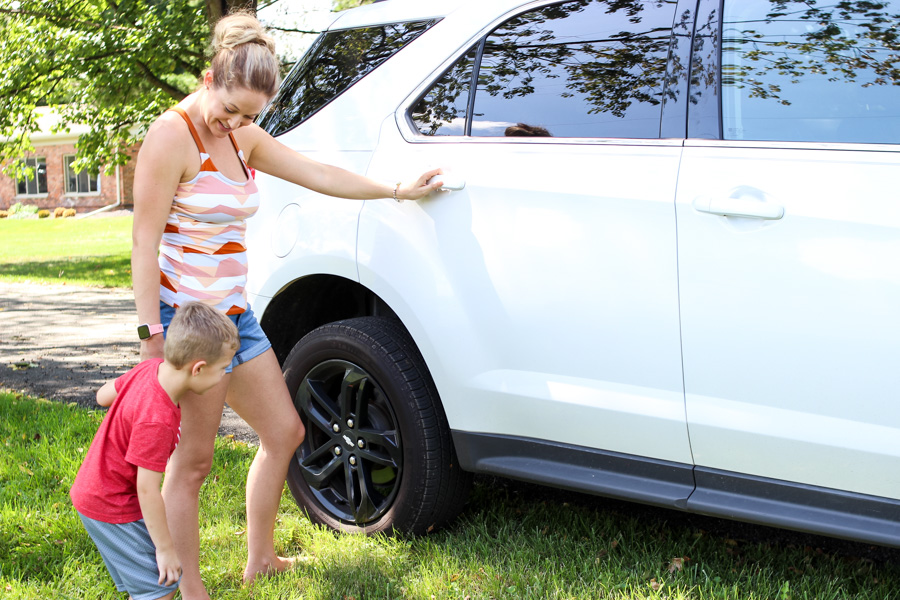
I’m sharing some tips and tools below to keep your littlest ones safe and sound in and around cars:
Use Correct Safety Restraints
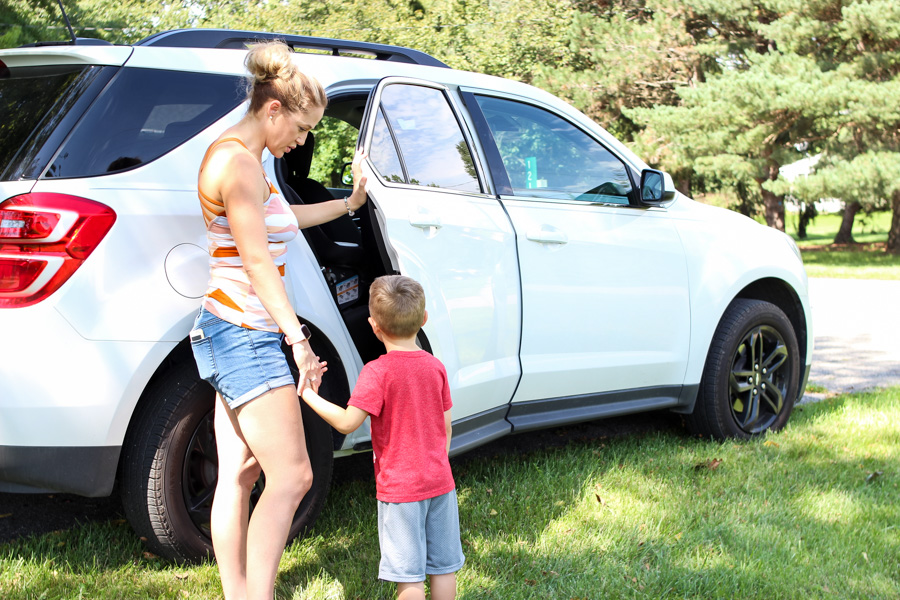
For many parents, this is such an overwhelming part of car safety. There’s often a lot of confusion about best practices when it comes to transitioning children to different types of seats and an underestimation of the risks of doing so. Many parents switch their children to different safety seats before they are ready which can result in serious injury. Below are the four types of car seats available and the guidelines for their use to keep your children as safe as possible:
Rear-Facing Car Seat: Best for children from birth to at least age 2 or when they reach the upper weight and height limit of that seat (check your manual for guidelines).
Forward-Facing Car Seat: Best for children age 2 to 5 or when they reach the upper weight and height limit for their car seat (check manual for guidelines).
Booster Seat: Best for children age 5 up and until they are 8 years old or 4-feet-9-inches tall. Children must ride in a seat until they reach the age requirement or the height requirement, whichever comes first. In Michigan (and other areas of the country), children ages 4-7 have a low rate of booster seat use (49.7%). If your child is under 4’9″, they are NOT tall enough to ride in the car without a booster seat. Adult seat belts do not protect younger children as well as a booster seat (a booster seat is essential for ensuring that the seat belt is in the correct area by raising their height to protect your child in a crash). In fact, booster seats reduces the risks of injury for children aged 4-8 years of age by 45% when compared to seat belt use alone. For more information on booster seat use, click here.
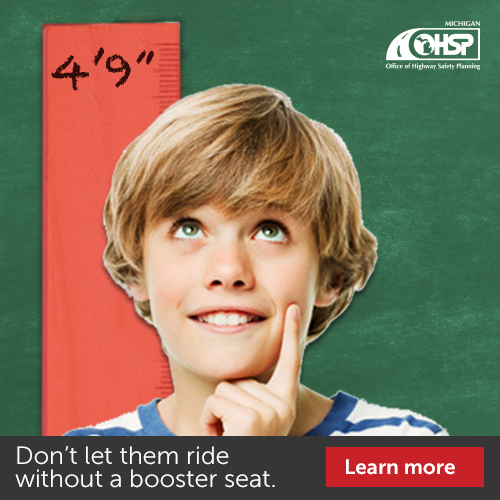
Seat Belt: When children are old enough, the seat belt should lie across the upper thighs and be snug across the shoulder and chest to restrain them in a crash. It should not rest on the stomach area or across the neck or face. For older children and adults, seat belt use reduces the risk for death and serious injury by approximately half.
Car is a No-Play Zone
To kids, cars seem like the ultimate gadget and toy. They see mom and dad, taking hold of the steering wheel, hitting buttons and so on and they can’t wait for the day to be behind the wheel themselves. While it’s tempting, the car should be a no-play zone for children to avoid children accidentally starting a car or locking themselves in the car unknowingly (lock car when you exit too).
Hand on Car
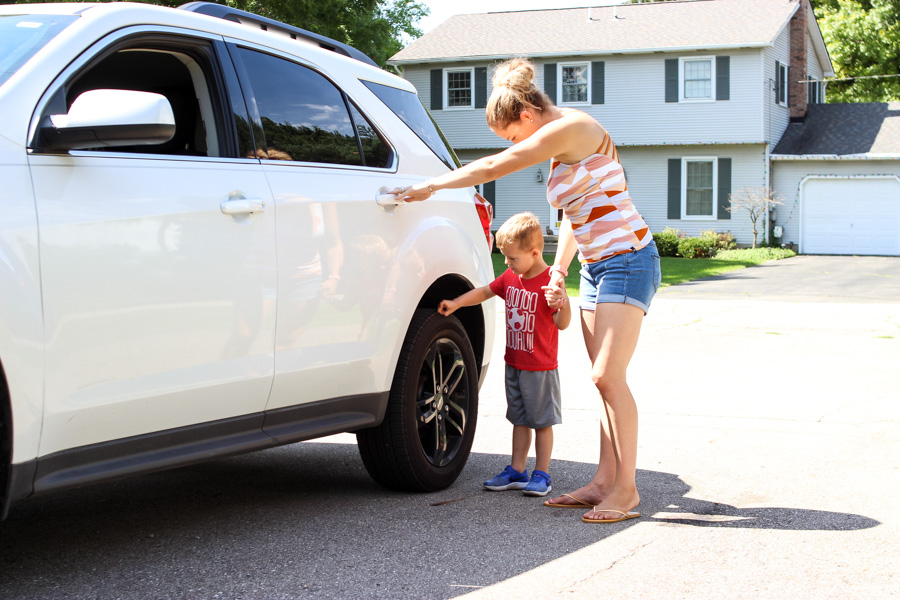
One of the areas of car safety that always worries me is in parking lots so we’ve enforced a rule where each child keeps a hand on the car at a time or is holding an adults hand. This ensures that our children aren’t walking into the parking lot or behind other cars.
Look Before You Leave
We’ve all heard the horrid causes of children being left in hot cars. Before exiting your car, get in the habit of checking the backseat. More often than not, changes of schedules or plans are when these type of situations occur, so getting in the natural habit of always checking is a foolproof way to be more vigilant. Another great tip is to always put your purse/wallet in the backseat as a simple and effective reminder.
Take a Walk
Before leaving, walk all the way around your parked car to be sure that there are no children in the way. Children are small and can often not be seen in mirrors or blind spots when drivers back-up.

For more information on car safety, please check out Michigan Office of Highway Safety Planning website!
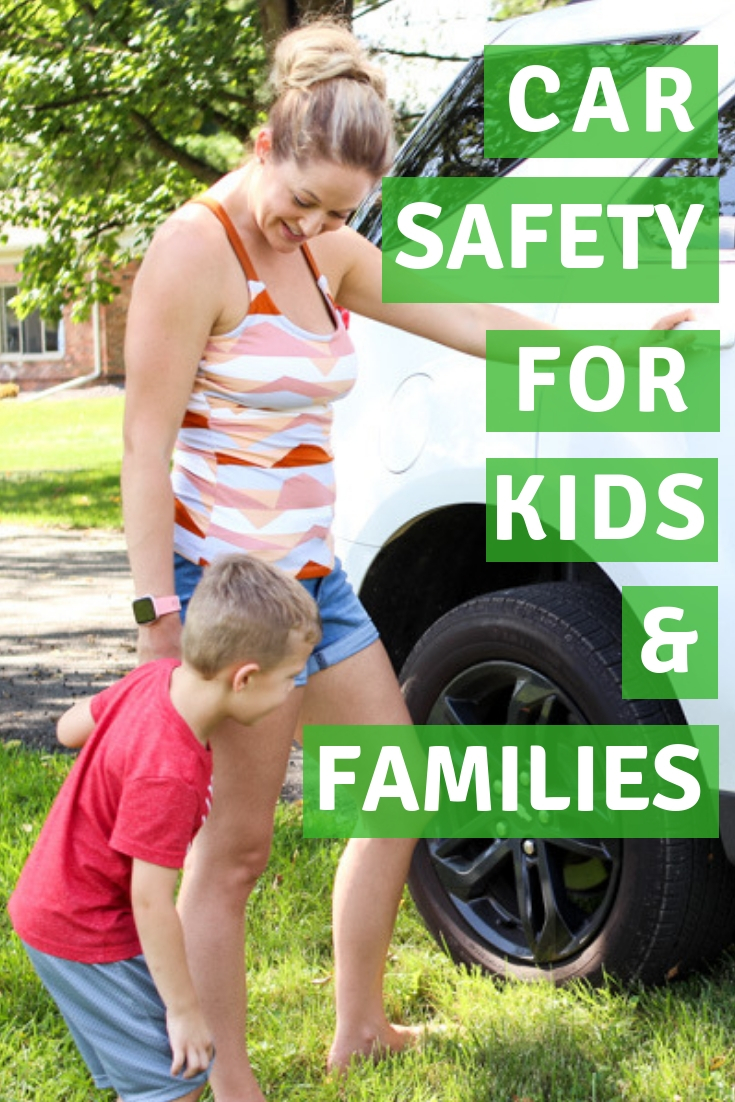


As I am soon to be a mom of 2 under 2 this is a great post to help stay on top of everything !
SO many people just have no idea the proper safety measures to take in a vehicle!! It’s so important for information like this get out there and circulating so everyone has a shot at learning the proper ways to keep their kids safe!
So much good information here! Thanks for taking the time to share this – such an important read.
This is such a helpful post, there are many people who could use this… I love the idea of leaving your purse in the backseat, great tip!
This is wonderful, especially for first time parents and not knowing what to expect!
Great information.
Thank you for article !